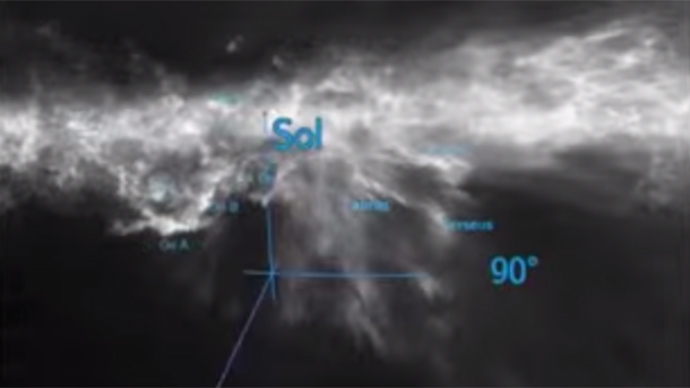Largest ever 3D map of galaxy's cosmic dust made for enthusiasts to navigate (VIDEO)

Astronomers have created the largest ever 3D map of our galaxy’s cosmic dust. It covers three quarters of Earth's sky, using data collected from as many as 800 million stars. The results have been turned into a series of unique “fly-through” videos.
The map reveals a wealth of details, from filaments to large cloud complexes, Harvard astronomers say. They estimated where dust was located by measuring the red glow that it gives to stars in the data acquired by the Pan-STARRS telescope in Hawaii. This is in much the same way that particles in our atmosphere add an orange glow to the sunsets on Earth.
Users can take advantage by navigating to a specific galactic location. “We expect the three-dimensional reddening map presented here to find a wide range of uses, among them, correcting for reddening and extinction for objects embedded in the plane of the Galaxy, studies of Galactic structure, calibration of future emission-based dust maps and determining distances to objects of known reddening,”scientists wrote in their paper, which is due to be published in the Astrophysical Journal.
One video revolves around the Milky Way's structure, looking
towards its 'anticentre'. The second focuses on the dust around
our own sun, labelled 'Sol'.
“Each frame shows a different statistical realization of the
map, so that the noise in each pixel shows the uncertainty in
reddening. The graticules show Galactic longitude and
latitude,”scientists explained.
READ MORE: NASA's New Horizons spacecraft speeds past Pluto in closest-ever approach












